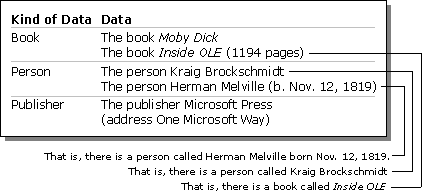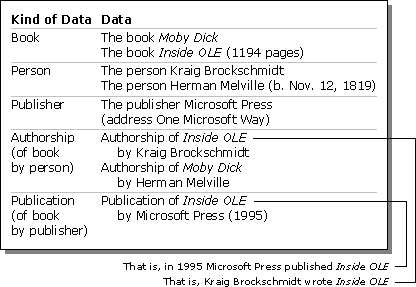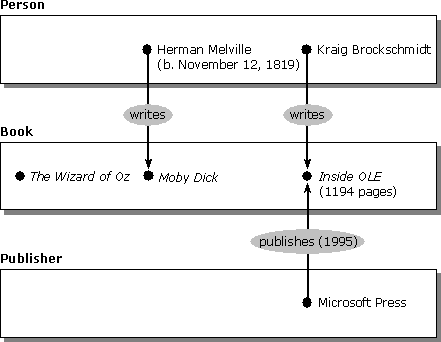
The following table lists data about books, people, and publishers. The first column (Kind of Data) provides labels for groups of data: books, people, and publishers. The actual data appears in the table's second column (Data).

Expressed graphically, the data in the table is shown in the following figure.

The following table expands the preceding table to include relationships. Again, the table uses a convenient grouping of the data. The first column labels each group.

The labels in the left column (Kind of Data) are one example of how the object model could store the bookseller's data. The labels identify three classes (Book, Person, and Publisher) and two relationship types (Authorship and Publication). Because it is a list, you can think of the entries in the Kind of Data column as data. Because it is data, you can create another table in which this information appears in the Data column. (See Ways to List Data, Applied to Types.)
In the Data column, each entry describes exactly one thing, either an object or a relationship. Each entry in the Data column describes a particular book, author, publisher, authorship, or publication.
The following figure contains arrows to show the relationships in the preceding table.
